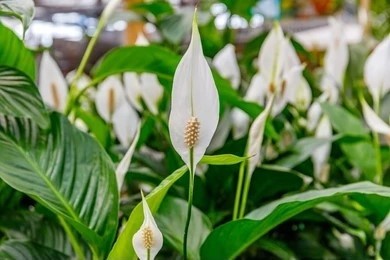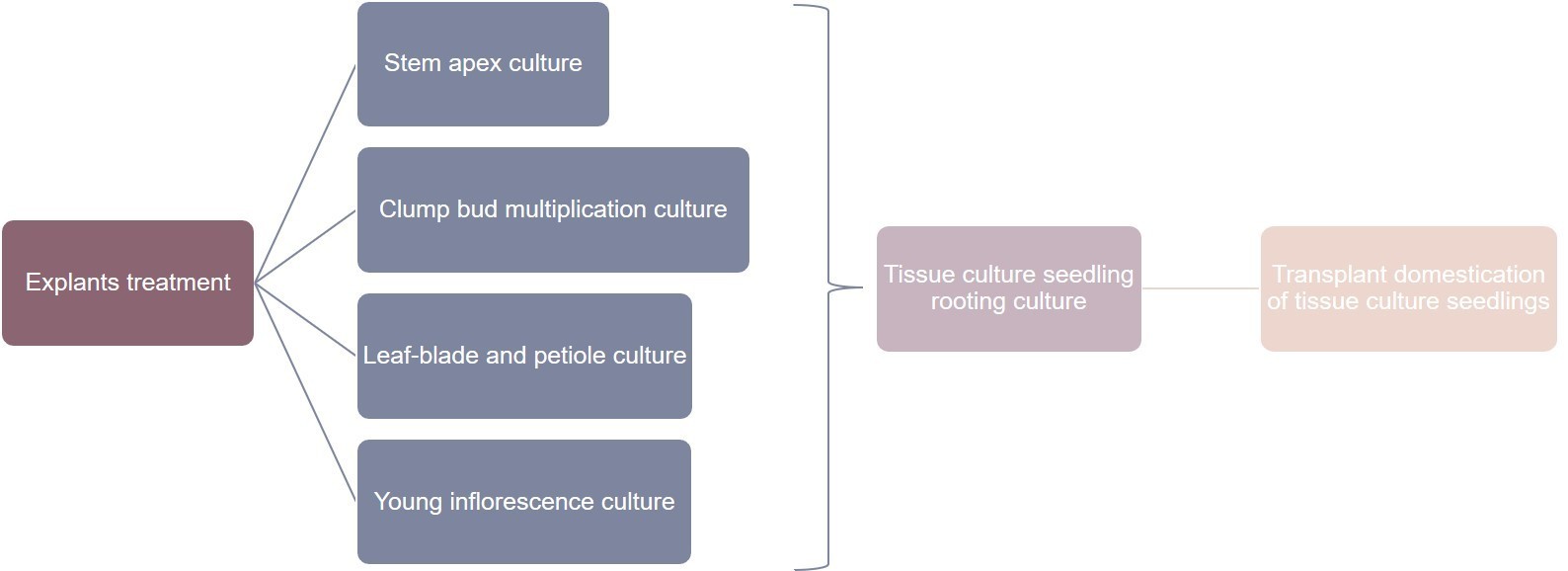Spathiphyllum Plant Tissue Culture
Spathiphyllum plants have bright green leaves and white spathes and are one of the most important flowering and foliage plants of Araceae. Spathiphyllum plants have no stems or very short stems, mostly cespitose, with oblong or
 Spathiphyllum ornamental plants in the flowering stage
Spathiphyllum ornamental plants in the flowering stage
We have established a tissue culture model suitable for
Spathiphyllum, an ornamental plant.
sublanceolate leaves, with long tips and rounded bases. The flowers are spathe-like, leaf-shaped, and pedal-less, with large, conspicuous flowers and long, white or green flowering branches above the leaf surface.
Most of the plants in this genus have reduced pollen and do not easily set seeds in cultivation, thus they are mainly propagated by division methods, which is slow and not suitable for commercial-scale production.
Propagation by division
Sowing propagation
- Seedbed sowing
- Sowing in cavity trays
Tissue culture service
There are two main pathways for rapid plant propagation using tissue culture, namely the organogenesis and embryogenesis pathways. The embryogenesis pathway is characterized by rapid reproduction and high genetic stability, and to date, more than 200 plants have been successfully induced with embryos. Lifeasible has established tissue culture and rapid propagation patterns and models suitable for the propagation of Spathiphyllum plants. A large number of high-quality seedlings are available for scientific research and producers.

- Selection of explants (related to the target material)
We recommend that you prefer tissues such as stem apical buds, leaves, young inflorescences, and lateral buds to be provided to our staff as ex vivo material for tissue culture for efficient and rapid delivery of your project.
Note: Please back up your experimental materials beforehand, and contact our staff immediately for an accurate response if you have any special needs.
Spathiphyllum plants are medium-sized, shade-tolerant, and are good indoor plants. It is often grown monocultures, which are not easy to divide and set seeds. Rapid propagation using tissue culture provided by Lifeasible is the best way to produce its seedlings, eliminating the stage of root induction in rapid propagation and allowing direct field transplanting with a fairly high survival rate, providing an effective way to save costs for in vitro plant production.
You want to sign a confidentiality agreement.
You have a specific plant species for your experimental needs.
You have a reliable and relevant cooperation project to discuss.
You are very interested in our project or have any questions.
You need an updated and detailed quotation.
For research or industrial use.

 Spathiphyllum ornamental plants in the flowering stage
Spathiphyllum ornamental plants in the flowering stage

